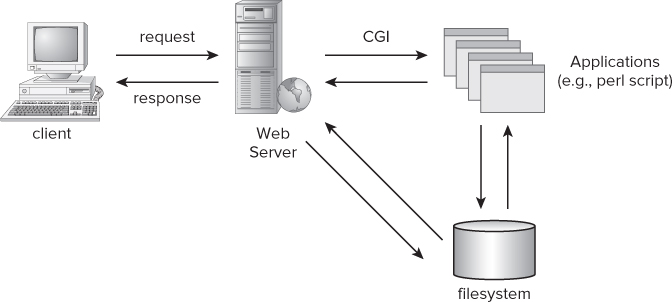Background
In the early days of the web, a web server was nothing more than a single executable. It listened on port 80 for incoming requests, translated the request URI to a local file, and then delivered that file to the client. Figure 11.1 shows this simple web server form.
The Common Gateway Interface (CGI) is an extension of this simple web server form that allows the web server to pass URI parameters (for example, form field data, query strings, and so on) to external programs, and thus deliver dynamic content produced by the external program or script. Figure 11.2 represents how the CGI interfaces between the simple web server and applications running on the web server host.
Over time, although the web server implementation has become significantly more complex, dealing with performance, scalability, and extensibility factors, the basic functionality remains the same: listener, interpreter, and applications.
Like most other web server platforms, IIS has grown in complexity and sophistication with each major version release. The core server has been enhanced and extended, continually improving the performance characteristics and functionality. Over the years, new IIS releases have boasted new logging options, new authentication capabilities, new ...
Get Professional Microsoft IIS 8 now with the O’Reilly learning platform.
O’Reilly members experience books, live events, courses curated by job role, and more from O’Reilly and nearly 200 top publishers.



